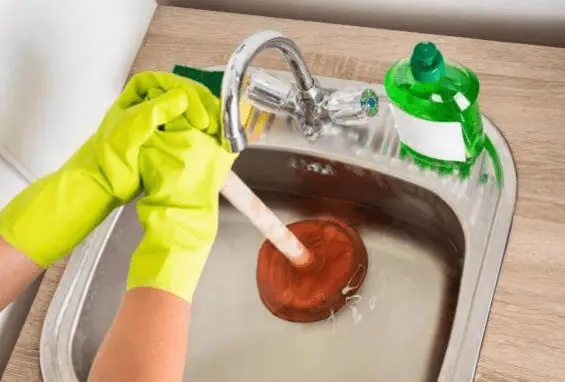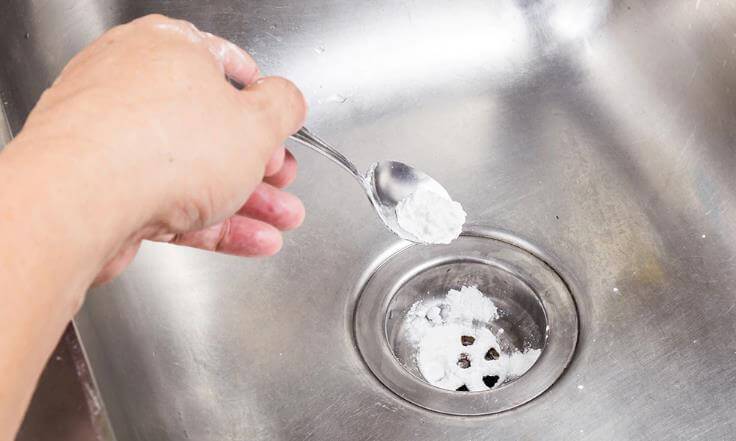A drainage or plumbing issue can be a real nuisance especially if it affects avital appliances like the kitchen sink. For instance, a kitchen sink draining into the yard outside can be disheartening.
It disrupts the whole household activity flow and if left unaddressed it can lead to far worse difficulties. For parents with children, breakfast before school, homework, and dinner in the kitchen becomes impossible.
To most kitchen users, the first step is to call a professional plumber as the dirty water rises and drains into the yard, and the dishes pile up.
However, when you read this article, you will know what causes this problem and some of the ways to solve it and prevent it without calling an expensive plumber.
What could be the Situation?
If your Kitchen sink drains outside into the yard, it’s not draining, it’s draining slowly, or emitting an odor, and you may have a clogging problem.
The clogged pipe may obstruct effective drainage, disrupting the dirty water flow to the sewer system and instead to your yard.
It’s vital to clear the clog as quickly as possible. Allowing a blockage to build up can result in burst pipes and a costly visit from a professional plumber.
Causes of a Dink Draining into the Yard
1. Pipe Scale
As water drains, it leaves behind mineral deposits such as calcium, fluoride, and magnesium. Temperature, as well as constant wet-dry conditions, affect the behavior of these particles.
This can lead to a build-up of scale to the point where they may cause a clog in the pipe.
2. Food Deposits

The kitchen sink drainage system is not designed to handle food bits.
However, you find that dinner debris goes down the pipe while you are doing the dishes.
Once these hard and sticky food substances get down your sink, the P-trap (the elbow-shaped pipe) is blocked.
Consequently, your sink drains very slowly or stops draining entirely.
3. Disintegration
In older homes, disintegration of the pipes can occur due to climatic changes that may cause pressure on old concrete.
Once this happens, the joints of the pipes can separate and fall. Eventually, the drainage system gets damaged causing it to drain into the yard.
4. Nature
Roots of plants, rodents, and soil can invade plumbing pipes through even small cracks, resulting in a blockage. The blocks in turn affect the kitchen sink making it drain in the yard.
5. Garbage Disposal
Drainage problems can sometimes be traced to the garbage disposal in your sink. Usually, if the blockage is in the disposal, turning it on will remove it.
Disposals that are overheated or dysfunctional may not even turn on, but you can reset them by pressing the reset button on the side or bottom of the unit. Restarting the disposal may also be necessary to remove the clog.
How to Solve a Kitchen Sink Draining Outside
There are a variety of solutions to unclog your kitchen sink, the majority of which are inexpensive and simple. Your kitchen sink will drain in no time with a little effort when you follow the following methods.
1. Inspect the Garbage Disposal
If you have a garbage disposal, check it first to ensure it’s not the cause of the clog.
Your garbage disposal and sink are both connected by a pipe that runs through your home. It’s common for food particles and debris to collect and become lodged in the hoses that connect them.
Running your garbage disposal may be enough to clear the clog. However, sometimes it may require rebooting or restarting.
2. Use Boiling Water
If your kitchen sink pipes clogging is a result of grease, soap residue, or food debris, you may only need boiling water to unclog them. This should be your second step if your garbage disposal is not the problem.
Steps:
- Heat half a gallon of water until it boils.
- Remove all cold stagnant water from the sink using a container.
- Pour the boiling water into the drain opening of the sink.
- The water should drain in a steady stream when you turn on the faucet.
- Re-do the process if the water is still draining slowly or stagnating in the sink.
It is important to note that this method is not recommended if you are using PVC pipes in your kitchen drainage. Piping made of PVC is susceptible to softening, warping, and damage from boiling water.
3. Use the Plunge
If the boiled water is not working, It’s time to pull out the plunger. Keep in mind that, while you can use a toilet plunger if that’s all you have, using a flat-bottomed one is recommended.
The plunge is a good method to start with especially when unclogging your double kitchen sink or any other. Follow these instructions with your plunger at the ready:

- Empty and standing water from your sink.
- Put hot water until it’s about halfway. (make sure the drainage hole is not sealed.
- Place the plunger over the drain and start pumping quickly up and down numerous times.
- Wait for the water to drain before removing the plunger.
- Repeat the procedure till the water drains completely.
4. Use Baking Soda and Vinegar
A simple baking soda and vinegar remedy could help unclog a clogged sink. Instead of using harsh and extensive chemicals that could harm the pipes or make the blockage worse over time.
This is a much gentler way to unclog your kitchen sink. The following steps will help you to unclog your kitchen sink with baking soda and vinegar.

- Remove any stagnant water in the clogged sink’s basin.
- Pour 1 cup baking soda down the clogged sink drain
- Then follow the baking soda with 1 cup white vinegar or apple cider vinegar down the drain.
- Cover the drainage hole entrance on the sink basin and let it stand for 15 minutes
- After 15 minutes, uncover the hole and pour hot water down the drain to eliminate the clog.
With this method, there are several other mixtures you can use such as baking soda and table salt, and also salt and vinegar.
Clean P Trap
The P trap is the elbow-shaped pipe under your sink. Food, grease, and other debris may become lodged in this pipe, causing your sink to drain slowly or not at all as a result of a snag in the water’s path down. To clean the P-trap follow these steps.
- Place a bucket under the pipe when you open the P-trap to capture any backed-up water or debris that may fall out.
- Remove the connectors that hold the curved portion to the vertical and horizontal drainpipes from the trap.
- Remove the P-trap and clean all debris, grime, and residue from the pipe.
- Reattach the trap to its position.
- Ensure to place it carefully using the rubber sealer on the pipe.
- Turn the faucet on to run the water down the drain by turning.
How to Prevent Future Sink Drainage Problems
- Avoid too much garbage at your disposal.
- Do not put a lot of food substrates down the sink drain.
- Avoid flushing big food particles and soap residues down the drain
- Avoid flashing inorganic stuff down the drain. This is important if your kitchen sink drains into the septic tank or any other alternative to the garden.
- Grease, oil, or coffee grounds should not be poured down the drain or disposed of in the garbage disposal. Place this waste in disposable containers or bags and dispose of it in an outside container.
- Make ice cubes out of a mixture of half vinegar and half water. Drop one or two of these into the waste disposal regularly to keep it fresh. Ground ice and a small amount of acidity will also aid in scraping buildup off the disposal and pipes.
- To keep the drain clear, run hot water from the tap after each use of the kitchen sink.
- Be sure to vent your kitchen drain well to avoid blockages that can cause slow drainage outside.

As a homeowner, I am specifically keen on home improvement. I am passionate about homes, yards, and home improvement. I blog on home ideas and reviews on solutions that make homes better.